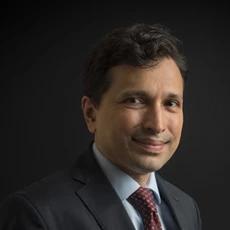-
Our Products
Our FundsOur High Return Funds
-
Self Care
Self-ServiceFind InformationWays To TransactPartner Solutions
-
Downloads
- Learnings
- About Us
-
More
-
Shareholders
-
Shareholders
-
Updates
-
-
Wealth Calculator
- Back
-
Shareholders
ABC Solution 

Loans
Insurance
Aditya Birla Sun Life AMC Limited
Aditya Birla Sun Life AMC Limited
Enter your details to visit our Metaverse

Enter valid first name
Enter valid last name
Enter valid email
+91
Enter valid mobile number
Enter valid otp detail
Select internet speed
Select privacy policy
Form Error
- Personal
-
Corporates
-
-
Advisors
-
Protecting
Financing
Advising
-
- Careers
- Mutual funds
-
Our Products
-
Our Funds
- All Funds
- Our Unique Solutions
- Our High Return Funds
- Aditya Birla Sun Life PSU Equity Fund
- Aditya Birla Sun Life Nifty Smallcap 50 Index Fund
- Aditya Birla Sun Life Pure Value Fund
- Aditya Birla Sun Life Infrastructure Fund
- Aditya Birla Sun Life Pharma and Healthcare Fund
- Aditya Birla Sun Life Small Cap Fund
- Aditya Birla Sun Life Midcap Fund
-
Solutions & Categories
-
-
Self Care
-
Self-Service
-
Find Information
-
Ways To Transact
Contact Us
1-800-270-7000 within india | +91-080-45860777 outside india | care.mutualfunds@adityabirlacapital.com -
- Downloads
- Learnings
- About Us
- Calculator
- Shareholders
-
Our Products
-
Our Funds
- All Funds
- Our Unique Solutions
- Our High Return Funds
- Aditya Birla Sun Life PSU Equity Fund
- Aditya Birla Sun Life Nifty Smallcap 50 Index Fund
- Aditya Birla Sun Life Pure Value Fund
- Aditya Birla Sun Life Infrastructure Fund
- Aditya Birla Sun Life Pharma and Healthcare Fund
- Aditya Birla Sun Life Small Cap Fund
- Aditya Birla Sun Life Midcap Fund
-
Solutions & Categories
-
-
Self Care
-
Self-Service
-
Find Information
-
Ways To Transact
Contact Us
-
-
Downloads
-
Learnings
-
About Us
-
Calculator
- Shareholders
Aditya Birla Sun Life AMC Limited
How to manage Mutual Fund investments when your Goal is near?
Mar 14, 2019
6 mins | Views 7524
When you think about investing your hard-earned money in mutual funds you would find a lot of information on how to invest, where to invest and what to know before you invest. Before choosing any particular scheme, you also find out the various categories of mutual fund schemes available in the market, judge the schemes on their performance and match the schemes to your goals. While you put so much research into your investments, do you ever consider how you would be utilising your mutual fund investments when you are closer to your goals?
Mutual fund investments are done with a goal in mind. You either want to fund your child’s education, buy a car, buy a home, marry your daughter or simply want a retirement corpus. When the goal for which you invested draws near, many of you feel clueless about channeling your investments. Do you know how to manage your mutual fund investments when your goals are near? Should you withdraw in one lump sum or should you withdraw slowly over time? What about market volatility when redemption is near?
So many questions, aren’t there?
Redeeming mutual fund schemes, while still maximising returns, is an art, just like investing in them is. If you plan a strategy in advance you would be able to reap the full potential of mutual fund investments. Since many of you don’t know how to do that, here are some pointers to get you started –
-
Moving from equity to debt
Equity mutual funds aim to give better returns over the long term. However, since equity is a volatile investment, it needs to be handled with care, especially when you are nearer to your goal. Thus, closer to goal, you could move from equity funds to debt funds so that the volatility in the market doesn’t affect your purpose of investment.
How to move from Equity to Debt when you are nearer to your goal?
In Equity funds, Systematic Investment Plan (SIP) may be a better route than lump sum because one cannot time the market and thus systematic investment over a period of time may reduce the risk.
Similarly, when you are redeeming your investments, it should ideally not be done in a lump sum, for the same reasons. Thus, Systematic Transfer Plans (STPs) could be a better option to do so.
When there are 2 or 3 years left for your goal to be realised, you may choose STP option on your equity mutual fund investment into a debt fund. A debt fund may give you lesser returns than equities but would typically have lesser volatility as well.
To illustrate, you have INR 10 lakhs in an equity fund. You can start a STP of 5% per month into a debt fund. When you do so, INR 50,000 would be transferred to the designated debt fund every month till the equity fund becomes nil. Thus, while the STP continues you can still enjoy equity linked returns and when the STP is complete you would have accumulated your investment in a lower risk scheme which can be used to meet your goals.
-
Choosing a Systematic Withdrawal Plan (SWP)
Systematic Withdrawal Plans (SWPs) may be one of the better ways of funding your retirement expenses. Through SWPs you can continue remaining invested in your choice of a mutual fund scheme while at the same time withdrawing the necessary funds at regular intervals for your financial needs. When you retire you have a lump sum corpus at your disposal for funding your lifestyle expenses post retirement. Instead of liquidating your entire corpus, you may invest it in a liquid/ultra short term debt mutual fund or any other debt mutual fund scheme and then choose SWP. Through SWP you can get a particular amount every month (or any other interval that you like) from your investment. The periodic pay-outs would help you meet your expenses while your investment would continue to grow.
To illustrate, say you have INR 25 lakhs as a retirement corpus which you may invest in a liquid fund and choose a STP of 5% payable every quarter. Thus, every quarter, your bank account would be credit by INR 1.25 lakhs which would help take care of your retirement expenses while the remaining fund would continue to earn returns and grow.
Click Here to Check - What are Ultra Short-Term Mutual Funds? -
Withdrawing in one lump sum
In case of short term goals when you invest for a limited period and then require funds in one lump sum, you can opt for lump sum withdrawal by redeeming your investments. For instance, if you want to buy a car or a bike or want to make a down payment on your house, you can redeem your investments in the mutual fund scheme at once, subject to applicable exit load, if any.
So, while you should master the art of investing in mutual fund schemes, you should also know the science of using proceeds from the same to fulfil your goals. Understand the above-mentioned strategies and choose a strategy which would be most profitable for funding your goals.
Mutual Fund investments are subject to market risks, read all scheme related documents carefully.
Rate this
Rate this Article
 Our Experts
Our Experts
 Tools and Calculator
Tools and Calculator
 RSS News Feed
RSS News Feed
 Archives
Archives
Close
Hover to Zoom




 1800-270-7000
1800-270-7000








Thank You
Message will change according to your requirement.